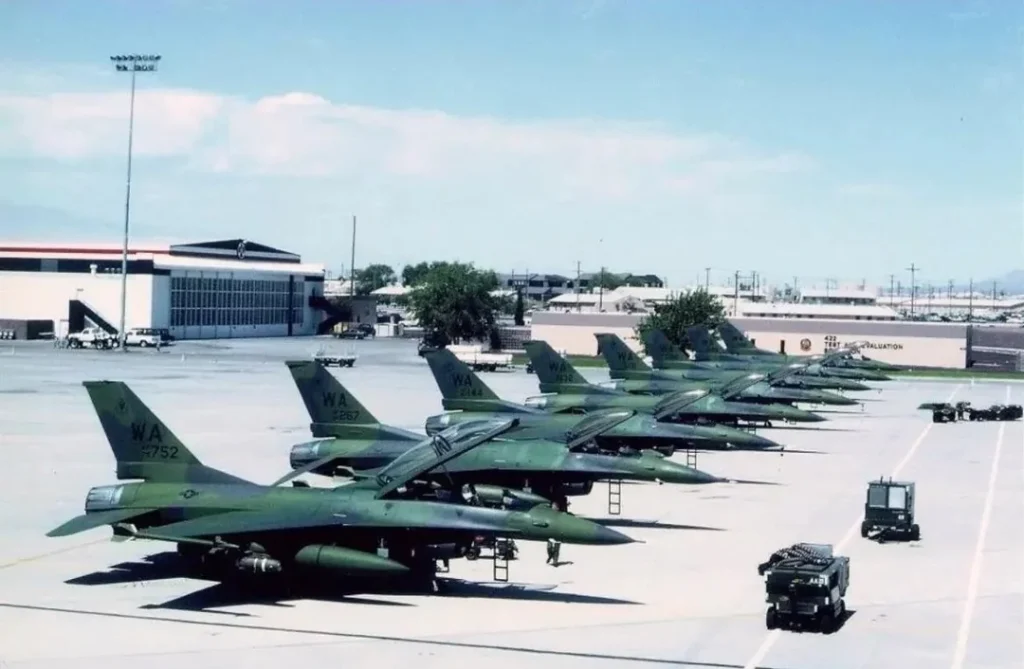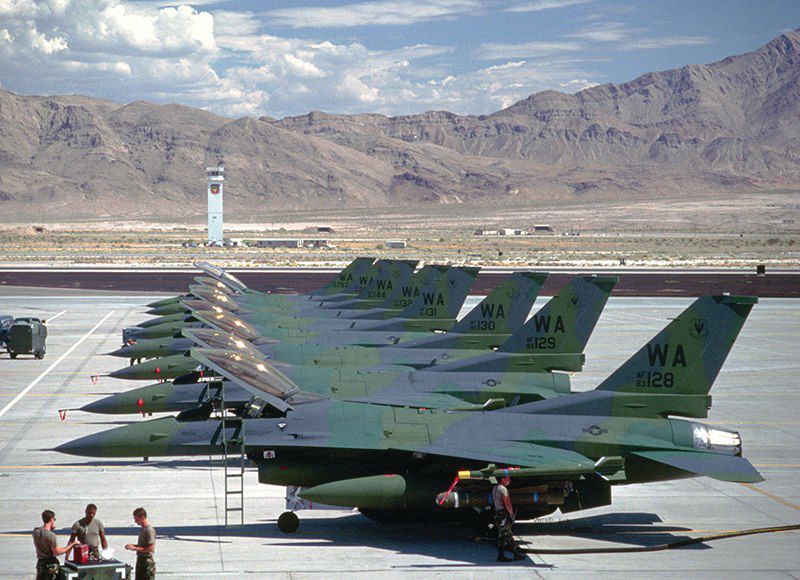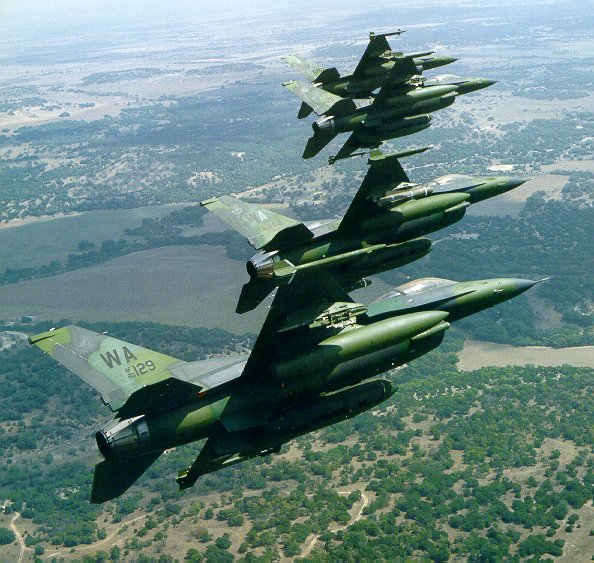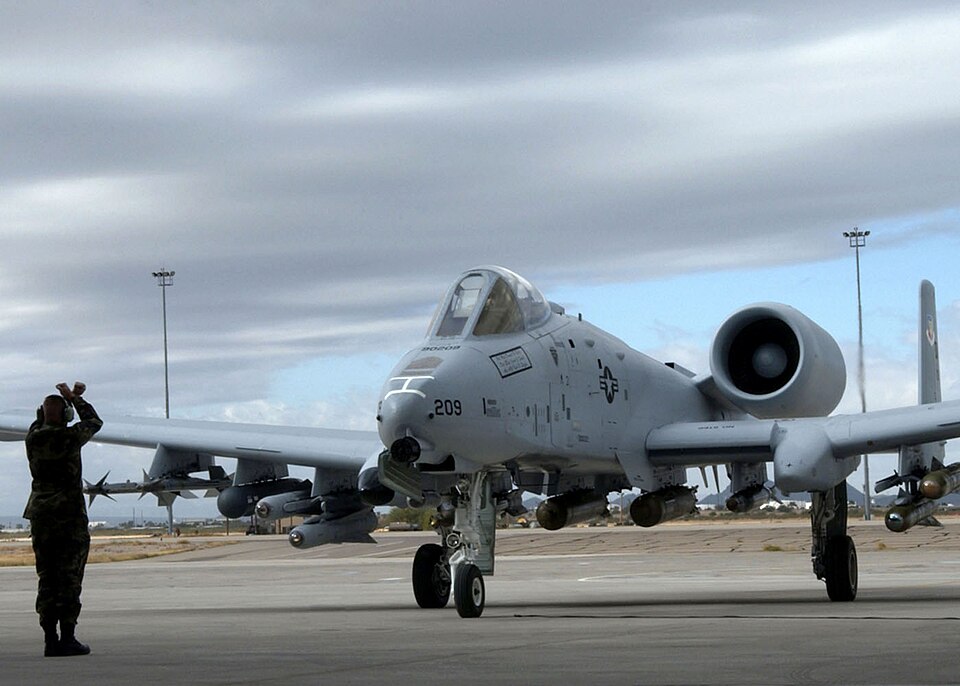For us AvGeeks, the debate between the F-16 and the A-10 in the close air support (CAS) role is a fascinating, and often fiercely debated, topic. While the sleek, supersonic F-16 “Viper” has proven its versatility across a multitude of missions, attempts to morph it into a true “Warthog” replacement have historically fallen short, a testament to the A-10’s unique, ground-attack-focused design. The story of the F-16’s CAS variants is a compelling tale of ambition, technological challenges, and the undeniable effectiveness of a purpose-built machine.
The genesis of the F-16’s potential in the CAS arena can be traced back to the late 1980s when the U.S. Air Force (USAF) began exploring the idea of the A-16, a dedicated close air support variant of the then-emerging F-16. The concept involved outfitting F-16A Block 15 airframes with a 30 mm cannon and 7.62 mm Minigun pods, even sporting the “European One” camouflage scheme. Designated as the “Block 60,” the A-16 aimed to provide a faster, more modern alternative to the aging A-10 Thunderbolt II, the first USAF aircraft specifically engineered for close air support. The A-10, a robust, twin-engine jet that first entered service in 1975, had already proven its mettle, most notably during Operation Desert Storm, where its ability to engage ground targets, including heavily armored vehicles, was invaluable. Aircrews affectionately dubbed it the “Warthog,” a moniker that speaks to its tough, almost ungainly, yet undeniably effective nature.

However, the A-16 program never materialized. A Congressional directive issued on November 26, 1990, mandated that the USAF retain two wings of A-10s, effectively halting the A-16’s development. This directive also spurred the USAF to consider an alternative: retrofitting 400 Block 30/32 F-16s with new equipment to handle both CAS and battlefield air interdiction (BAI) missions. This “F/A-16” project envisioned incorporating advanced systems like a digital terrain-mapping system, GPS for enhanced navigation and weapons delivery, and an Automatic Target Handoff System (ATHS) for seamless data exchange with ground units. Yet, this ambitious approach was also abandoned in January 1992, with the focus shifting to equipping Block 40/42 F-16C/Ds with LANTIRN pods for improved night operations and targeting.
Interestingly, even before these broader programs, a more direct attempt to arm the F-16 with a heavy cannon had been undertaken. In 1991, 24 F-16A/B Block 10 aircraft belonging to the 174th Tactical Fighter Wing (TFW), a New York Air National Guard unit that had transitioned from the A-10 just three years prior, were fitted with the 30 mm GAU-13/A cannon. This four-barrel derivative of the A-10’s fearsome seven-barrel GAU-8/A Avenger was housed in a General Electric GPU-5/A Pave Claw gun pod mounted on the F-16’s centerline station, complete with 353 rounds of ammunition. There were even plans to adapt F-16Cs to this configuration and integrate the A-10’s AN/AAS-35V Pave Penny laser spot tracker.

However, this experiment proved short-lived and ultimately unsuccessful. The sheer vibration generated by the GAU-13/A during firing was so intense that it severely hampered both the pilot’s ability to aim and the aircraft’s handling characteristics. After a mere two days of trials, the project was suspended. This practical demonstration highlighted a fundamental challenge: adapting an airframe not specifically designed for the immense recoil of a large-caliber cannon was fraught with difficulties.

The debate surrounding the F-16 as an A-10 replacement was reignited during Operation Desert Storm. Both aircraft saw extensive action, providing a wealth of real-world data on their performance across various mission types. The Block 10 F-16 possessed advantages in speed and full night operational capability, whereas the early A-10As often relied on flares to illuminate the battlefield or the assistance of a second A-10 for target identification at night.
Despite these apparent advantages, the F-16’s performance in the crucial CAS role during Desert Storm was deemed inferior to that of the A-10. A key factor was the F-16’s vulnerability to ground fire at low altitudes. Unlike the A-10, which was specifically designed with rugged survivability features, including a titanium “bathtub” cockpit and redundant systems, the F-16 was far more susceptible to damage. This forced F-16 pilots to operate at higher altitudes, which consequently reduced the accuracy of their weapons compared to the A-10’s devastatingly precise Maverick missile and gun strafing runs. Furthermore, the instability and inaccuracy of the 30 mm gun pod on the F-16 further hampered its effectiveness in the CAS role.
The lessons learned during Desert Storm were stark. The A-10 was truly the only aircraft that was built solely for the CAS mission. This sentiment was echoed by Pierre Spey, a former Pentagon engineer who worked on both the F-16 and A-10 programs. In a Wall Street Journal article, Spey famously described the idea of replacing the A-10 with the F-16 as “one of the most monumentally fraudulent ideas the Air Force has ever perpetrated.”

Spey further elaborated on the A-10’s battlefield prowess in a 1991 issue of IEEE Spectrum magazine. He highlighted that despite comprising only one-twelfth of the fighter force, the “low tech” A-10 flew one-third of the sorties and accounted for two-thirds of the tank kills and over ninety percent of the artillery kills claimed during the air campaign. Its ruggedness allowed it to survive intense anti-aircraft fire and effectively employ anti-tank Maverick missiles in roles where F-16s, F-111s, and F-18s were simply too vulnerable.
The operational realities of Desert Storm ultimately led to the phasing out of the Block 10 F/A-16 after the war. While the F-16 remains a cornerstone of the USAF fleet, its attempts to fully replicate the A-10’s unique capabilities in the close air support role have consistently fallen short. The story serves as a powerful reminder that sometimes, a purpose-built platform, even one considered “low tech” by some, can outperform more versatile but less specialized alternatives in its niche role. The “BRRRT” of the Warthog, it seems, is a sound that’s difficult to replicate.







![Republic XF-84H Thunderscreech – The Loudest Aircraft Ever Built [RECORDING] Republic XF-84H AVGEEKS Thunderscreech - The Loudest Aircraft Ever Built](https://aviationhumor.net/wp-content/uploads/2024/11/Republic-XF-84H-Thunderscreech-324x160.jpg)
